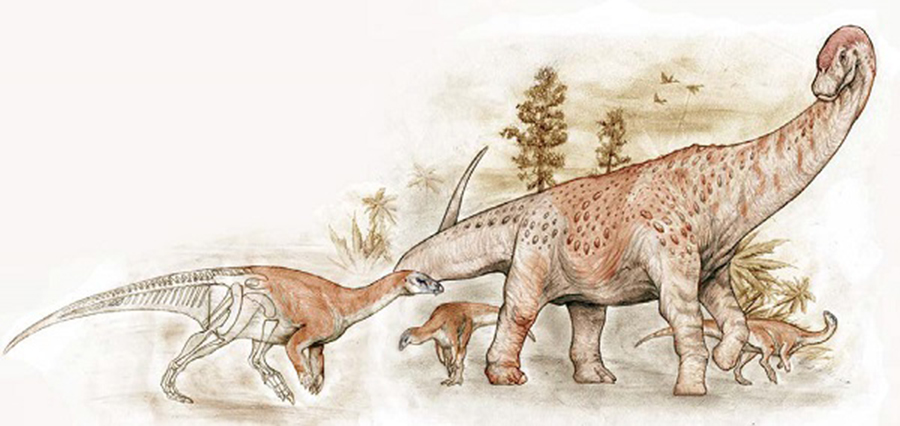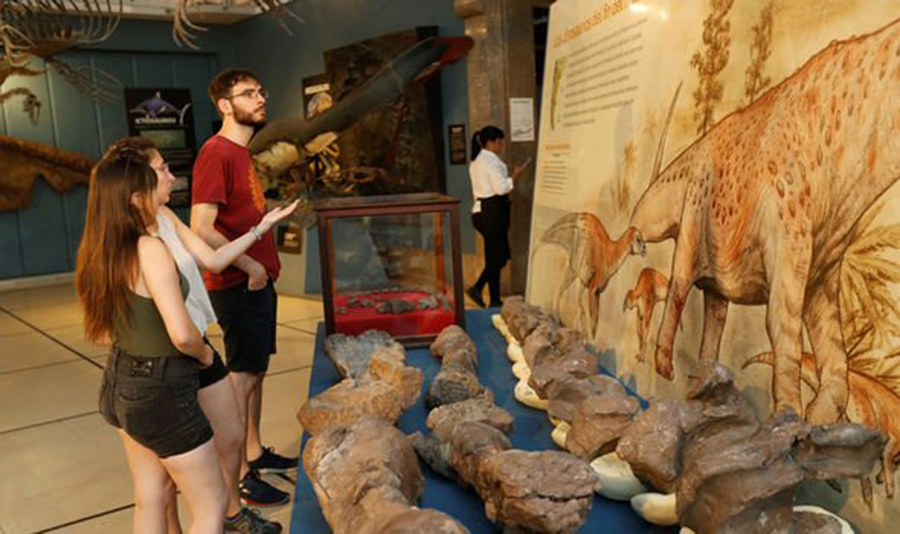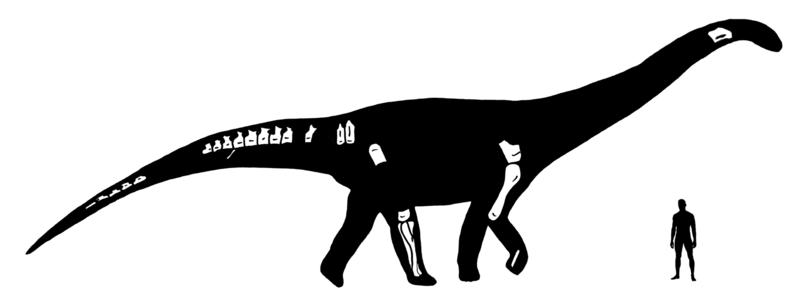Argentine Scientists Discover New Dinosaur Species: Nullotitan glaciaris

Argentine palaeontologists have discovered the remains of new herbivorous species of dinosaur that inhabited the country's southern El Calafate 70 million years ago.
Nullotitan (meaning "Nullo's giant", in honor of paleontologist Francisco Nullo) is a genus of lithostrotian titanosaur from the Chorrillo Formation from Santa Cruz Province in Argentina. The type and only species is Nullotitan glaciaris. It was a contemporary of the ornithopod Isasicursor which was described in the same paper.
Speaking about the discovery palaeontologist Fernando Novas said: "These (discoveries) are from a new archaeological site that is full of plant fossils, dinosaur fossils and other vertebrae. It reveals to us an ecosystem from around 70 millions of years ago, before dinosaurs became extinct.
Nullotitan is a huge sauropod. The found remains of the holotype point to an animal of more than 20 metres (66 ft) in length.

The descriptors were able to identify some distinguishing features. Two of them are autapomorphies, unique derived properties. The anterior and middle tail vertebrae have sides and undersides that are eroded by numerous large depressions that do not pierce the bone wall. From the front or rear, the fibula has a striking, wavy bend.
In addition, there is a unique combination of characteristics that are not unique in themselves. The vertebral bodies of the anterior tail vertebrae are remarkably short, twice as wide across as horizontally long. At the middle tail vertebrae there is a large trough on the side that is covered from above by the side protrusion. The tail vertebrae are not pneumatized. The middle tail vertebrae have a deep longitudinal trough on the underside bounded by two thick ridges. The lower end of the tibia is flattened from the front to the rear and widened more across than with other titanosaurs.
Source: www.rte.ie/









